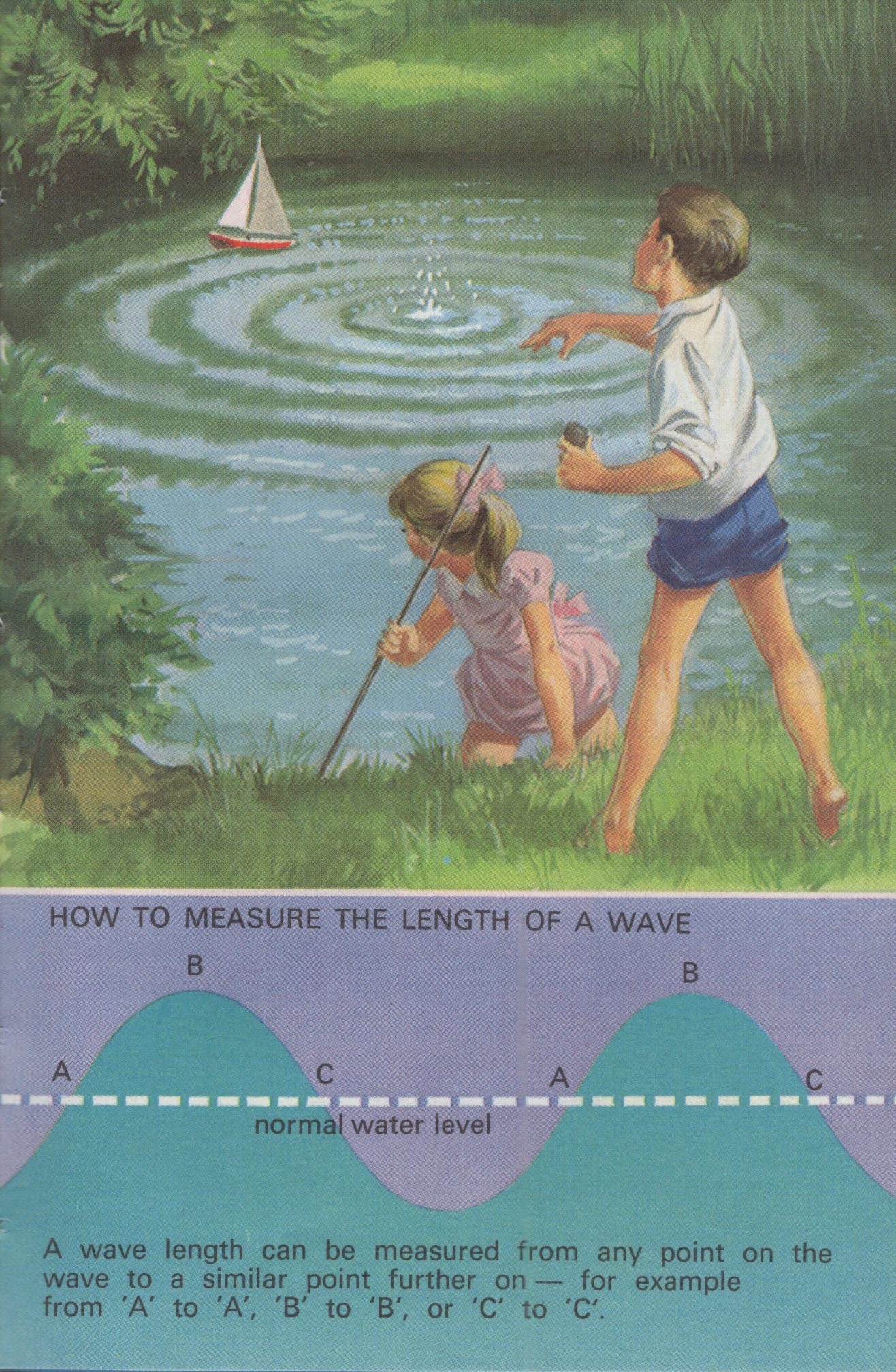 Illustration: Wave motion, and how a wave is measured
Illustration: Wave motion, and how a wave is measured
If study waves on water, it will help us to understand radio waves, always remembering that radio waves travel at 186,000 miles a second in ether (something which is supposed to be in everything - wood, glass, mountains, sea, air, etc.)
On a calm day, stand on the bank of a pond and throw a fair-sized stone so that it plunges into the pond near the centre. From the point where the stone hits the water, rings of ripples will spread out towards the banks of the pond. If you put a cork or toy boat onto the water, it will bob up and down when the ripples - or small waves - reach it.
When you listen to a radio transmission such as a Morse-code message or a BBC programme, the transmitting aerial at the BBC is giving 'punches' to the ether, just like your did to the water in the pond. Rings of radio waves spread out from the transmitting aerial, and, when they pass across the aerial attached to your receiver, they induce (remember this word), or force, electrical currents to flow up and down in it, and you hear Morse-code signals, the human voice or music. Your receiver may be likened to the cork or boat which bobbed up and down in the pond.
Material taken from: A Ladybird 'Achievements' Book, Publishers: Wills & Hepworth Ltd, Loughborough, First published 1968. Printed in England.